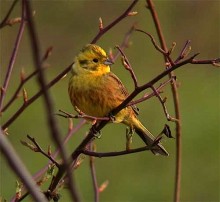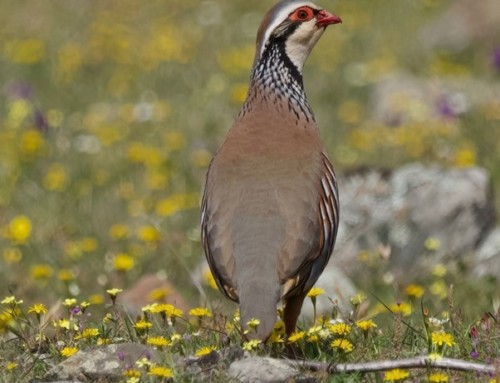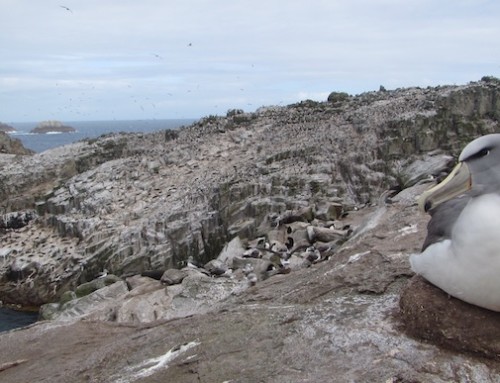Regional dialects have been discovered among many bird species and the Yellowhammer is a great example.
Yellowhammer and
citizen-science projects
Yellowhammers have something in common with us: they have regional dialects. If you listen to their song carefully, you’ll notice that their songs sound different from region to region.
Dialects have been discovered among many bird species that learn their vocalization by imitating their parents or neighbour, particularly hummingbirds, parrots and passerines. What can we learn from the research of bird dialects? It may contribute not only to answering many intriguing questions regarding the cultural evolution of vocal communication but also inform other area of ecological topics such as invasion and landscape ecology. However, such research requires a large amount of data from vast geographic areas, which can be too costly and time-consuming for an individual scientist to collect. One way of overcoming these financial and time hurdles is to get the public involved in a citizen-science project. The study species, however, must be easy to recognize, both by sight and ear. The Yellowhammer meets these requirements very well.
Figure 1. Two samples of Yellowhammer song.
Yellowhammers are relentless singers; they sing from sunrise to sunset, February to August. Their song is simple and an experienced listener can even distinguish basic dialects, differing in the final part of the song (Fig. 1). Males maintain the same repertoire they learned during the first two years of their life. Yellowhammer dispersal is limited and many individuals hold the same territories for years. This is probably the reason why borders between populations with different dialects persist for decades. Systematic study of Yellowhammer dialects started in the first half of the 20th century, yet until 2011 only two countries were thoroughly studied, Germany and Denmark (the latter with the help of volunteer recording the birds already in the 1980s). In these countries more than 10 dialects were identified that can be divided in two groups that differ in the first syllable of the final phrase (Fig. 1). Earlier works even suggested these two groups were separated geographically, with one being dominant in the west and the other in the east of Europe. The border between these two groups should cross Central Europe, running across Germany and the Czech Republic. From the dialects perspective, however, Czech territory was a blank map.
Dialects of Czech Yellowhammers Project
The Czech Republic is almost three times smaller than the UK, yet it hosts twice as many nesting Yellowhammers. However, even in the Czech Republic populations of Yellowhammers are declining. In 2011, the Czech Ornithological Society wanted to draw public attention to this species and threats of birds in agricultural landscape, and thus selected Yellowhammer as the Bird of the Year. A part of the campaign was a new citizen science project: ‘Dialects of Czech Yellowhammers-. Its aim was to map the distribution of Yellowhammer dialects in the Czech Republic and to identify the potential border between two main dialect groups, all with the help of the public. Over two years more than 1700 recordings were obtained from over 600 localities. Thanks to the effort of volunteers, the border between the two dialect groups is now clearly visible (Fig. 2, western group is in red) and the Czech Republic is the country with the mostly detailed knowledge of distribution of Yellowhammer dialects. However, with an increase of detailed knowledge about Yellowhammer dialect distribution, many interesting questions have arisen as well: What are the main factors ensuring the long-term maintenance of dialect types? Are the boundaries between neighbouring habitats following habitat discontinuities or are social interactions more important? How do dialects evolve in newly established areas? To answer the last question, a new project has been launchedÔǪ
Figure 2. Distribution of different Yellowhammer dialects in the Czech Republic.
Yellowhammers Dialects Project
In the UK Yellowhammers are becoming scarce, yet there is a place where these British birds still do well: New Zealand. They were introduced to New Zealand in the second half of the 19th century by British immigrants to remind them of their lost homeland. The introduction process was organized by ‘Acclimatisation Societies-who kept records of the numbers and localities of introductions. Over 30 years more than 450 individuals were released, rapidly establishing viable populations and spreading across the country. At the beginning of the 20th century, around 40 years after the first three individuals were liberated, Yellowhammers were recognized as a serious pest and farmers were even willing to pay bounties for their eggs. The situation has changed over time, but Yellowhammers are still much more abundant in New Zealand than in their mother country the UK.
This natural experiment gives us an opportunity to study the evolution of Yellowhammer dialects after introduction. The whole process of introduction acted as a serious ‘bottle-neck- with only a few individuals selected for introduction and even fewer surviving the transport, which took almost 4 months. Therefore, it is likely that only a subset of all dialects present in the UK at the time were brought by introduced birds to New Zealand. In this ‘introduction lottery- the odds were for the dialects most widespread in the UK to be introduced, yet it is possible that some rare dialect could win and become dominant in New Zealand. Additionally, some new dialects could have emerged by cultural evolution during the rapid expansion to unoccupied territories. The current distribution of dialects may thus tell us something about how populations spread across this new territory.
To answer these questions a new citizen-science project called Yellowhammer Dialects Project (https://yellowhammers.net) started, which aims to map and compare the distribution of Yellowhammer dialects in the UK and New Zealand. This research can’t succeed without the help of volunteers from both countries. We have already established cooperation with Forest & Bird, a prominent wildlife organization in New Zealand. Hopefully, the involvement of the British public in research could help Yellowhammers get the attention they deserve.
Get involved!
If you would like to get involved in recording yellowhammer songs for our project you don’t need any sophisticated equipment (many cell phones or digital cameras will do) or specialized knowledge. You will find all necessary information on the project’s website www.yellowhammers.net. And please be kind enough to spread the word about our project.
Image: Yellowhammer © Steve Dudley
Blog with #theBOUblog
If you want to write about your research in #theBOUblog, then please see here.







